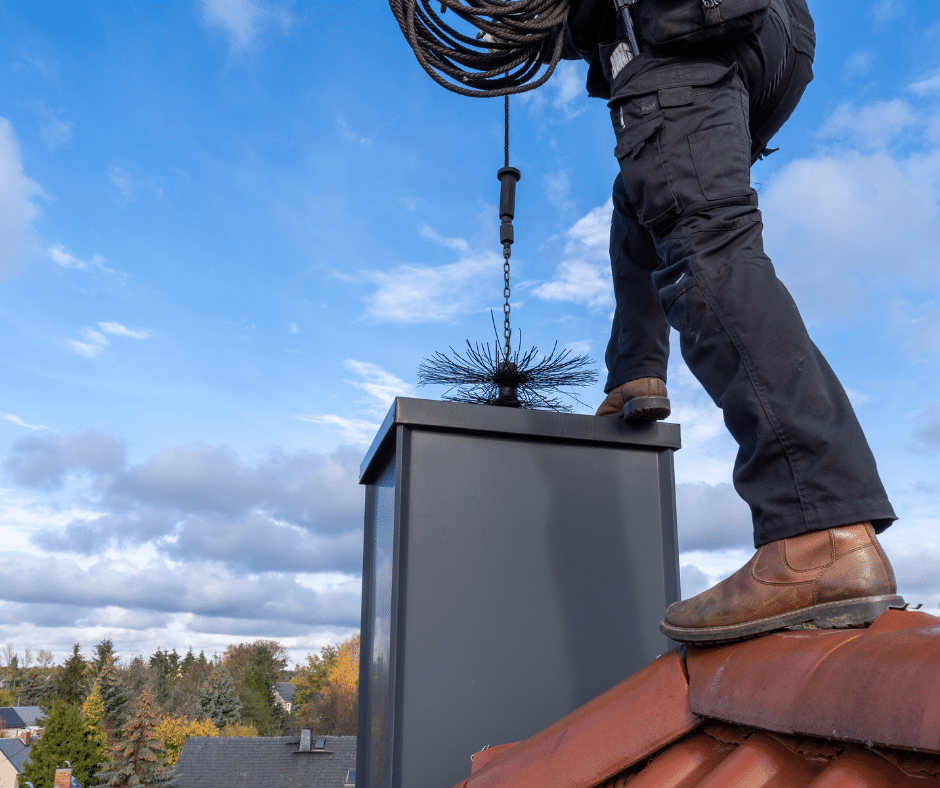The chimney is a complex system, but you may be surprised to learn that chimneys and those who sweep them have a complex history as well! Dick Van Dyke brought chimney sweeps into our hearts with his performance in Mary Poppins, but there’s so much more behind every cleaning Clean Sweep does. From aristocratic beginnings, to the chimney sweeps cleaning your systems today, here we will briefly dive into the history of Chimney Sweeps.
Aristocratic Beginnings
The first records of chimneys are found in 13th century Italy by the Romans. Before this time most kept their fires in the center of the room. The Romans developed the first early fireplaces and chimneys for cooking and warmth within the home. However, the chimneys we know of today weren’t popularized until the 16th century in England. Initially, you could only find fireplaces and chimneys in the wealthy, ruling class mansions. Chimney Sweeps first came onto the scene at this time, serving the lords and ladies of 16th century England.
Working Class Heroes
Before too long, the working class began building fireplaces and connecting chimneys in their homes. As this happened, people began to use coal to burn in their fireplaces instead of firewood. While coal burns hot, it releases a thicker smoke which requires more frequent sweeping. The thick smoke produced by coal also began to make people sick, and those who got more frequent sweeps stayed healthy. This is when chimney sweeps began being associated with health and well being, and many even considered them lucky. However, nothing gold can stay and in the 17th century, England implemented a Hearth Tax. This tax raised the amount of taxes based on the amount of chimneys in the building. To avoid taxation, builders began linking several hearths to the same chimney system. Chimneys became complex, cramped, dark mazes.
Child Labor
As the chimneys got smaller, tragically the only workers who could fit into them were children. Often orphans sold by their destitute parents, these young boys were forced to work from dusk till dawn for basic human rights such as food, water, and shelter. Chimney masters effectively owned these young children, and if they performed slowly or were frightened to enter the dark, dirty chimney, their chimney master would kindle a fire in the fireplace below them to get them to work faster. This is where we get the phrase “to light a fire under” a person. Chimney masters also implemented the use of firepokers to prod the children into the chimney. Often children would become trapped in the chimney, and an untold number of them died. Respiratory conditions became commonplace. This flagrant abuse of children was commonplace and expected in maintaining a chimney at this time.
Damage and Reform
Because of the horrible conditions facing these children and adolescents, the first cases of industrial cancer were attributed to adolescent chimney sweeps. The boys would develop deformities from contorting their bodies in chimneys throughout their childhoods. After the death of a child trapped in a chimney flue and the conviction of manslaughter to his chimney master, Parliament passed The Chimney Sweepers Act of 1788 which prohibited boys under the age of 8 from working in chimneys. Seeing the injustice, William Blake wrote his poem “The Chimney Sweeper” in 1789 to shed light on the cruel treatment of children in chimneys. The Chimney Sweepers Act was amended several times, but none of these laws and regulations were enforced upon chimney masters. It wasn’t until 1864, finally, when Parliament passed the “Act for the Regulation of Chimney Sweepers” that the use of child labor for chimney sweeping ceased. In this act, Parliament detailed that no one under the age of 21 is to enter a chimney for sweeping, and imposed stiff fines or even imprisonment for non compliant chimney masters.
Into Today
Without child labor, a new problem arose. How would chimney sweeps maintain a clean and safe chimney? Joseph Glass was instrumental in reforming the way we clean chimneys, and was an avid fighter against the use of “climbing boys.” He invented a crane system in which metal rods are attached with brass screw joints. This gave the rod flexibility so that it could bend with the chimney system and prevented anyone from having to traverse the system. A wheel was mounted at the top to prevent jams, and a brush was mounted to the bottom for a thorough clean. This invention is the cornerstone of modern chimney sweeping, and many sweeps today use mechanisms that descend from Glass’ crane. Your modern chimney sweep has the benefit of modern technology. Implementing the use of cameras, chimney sweeps can thoroughly clean every nook and cranny of your chimney system. The modern sweeps at Clean Sweep are trained professionals with over 30 years of experience.

Your Chimney Experts
While the history of chimney sweeps is littered with controversy, it’s important for us at Clean Sweep to know our roots. Through the history of chimney sweeps, we have developed into the professional, science based experts we are today. Clean Sweep is here to maintain your chimney, from beginning to end. We are equipped to perform chimney inspections, chimney repairs, and chimney sweeps to any chimney system in Western North Carolina. Give us a call to book your appointment today.


